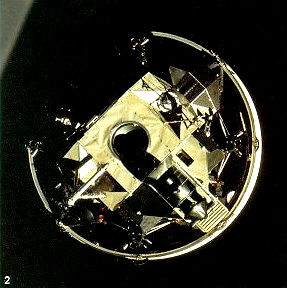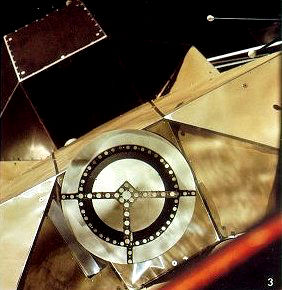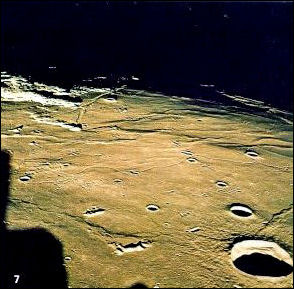 |
 |
 |
 |
 |
 |
|
ARMSTRONG This is a view of the descent trajectory area as viewed through the LM window during our activation. (Photo 7.) In the bottom right of the photograph is the crater Maskelyne and the bottom center is the mountain called Boot Hill. Immediately above Boot Hill is a small sharp-rimmed crater called Maskelyne W which was the crater we used to determine our downrange and crossrange position prior to completing the final phases of the descent. The landing area itself is in the smooth area at the top of the picture just before we arrive at the shadow or what is called the terminator. We had seen a number of pictures from Apollo's 8 and 10 which gave us an excellent understanding of the ground track over which we would pass during the descent. The crater Maskelyne W appeared approximately two to three seconds late and gave us the clue that we would probably land somewhat long. After completing those position checks we rolled over face up so that the landing radar could lock on the ground and confirm our actual altitude. Now, at this phase in the trajectory we were pointed directly at the planet Earth. In the final phases of descent after a number of program alarms, we looked at the landing area and found a very large crater. (Photo 8.) The camera is located in the right window and looks to the right and it just barely sees the boulder field that we are passing over. We are at 400 feet and the boulders are about 10 feet across. This is the area which we decided we would not go into; we extended the range downrange and saw this crater which we passed over -- this 80-foot crater-- in the final phases of descent and later took some pictures of it. The exhaust dust was kicked up by the engine (Photo 9) and this caused some concern in that it degraded our ability to determine not only our altitude and altitude-grade in the final phases, but also, and probably more importantly, our translational velocities over the ground. It's quite important not to stub your toe during the final phases of touchdown. Once settled on the surface, the dust settled immediately and we had an excellent view of the area surrounding the LM. We saw a crater surface, pock-marked with craters up to 15, 20, 30 feet and many smaller craters down to a diameter of 1 foot and, of course, the surface was very fine-grained, (Photo 10.) We could tell that from our view out the window, but there were a surprising number of rocks of all sizes. |
| |
|
 |
 |
 |